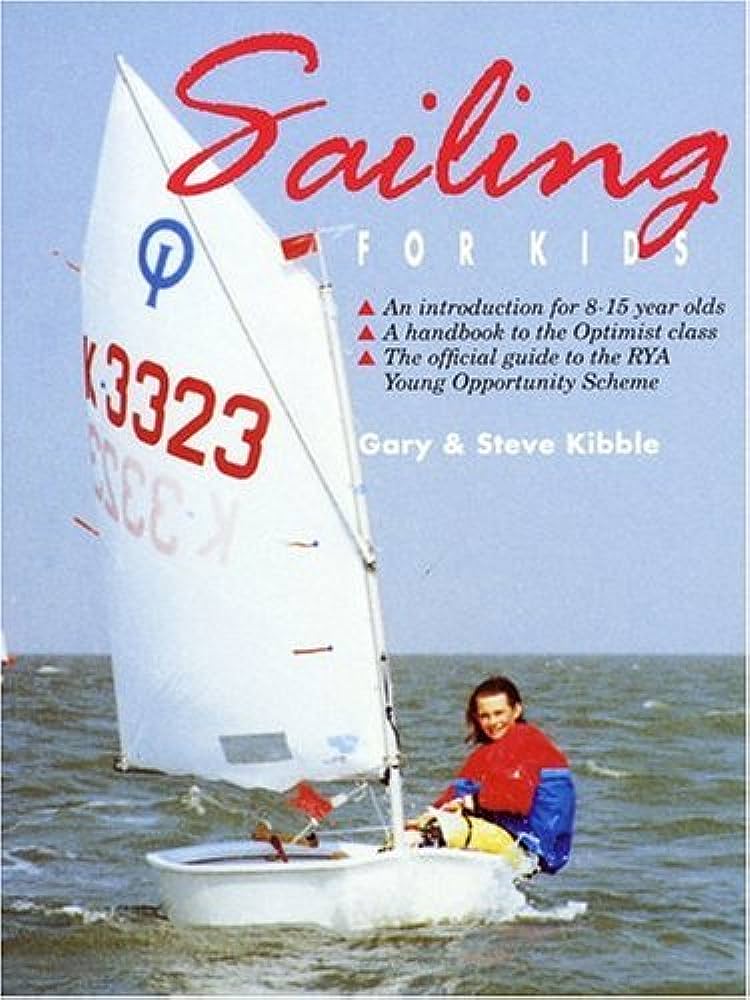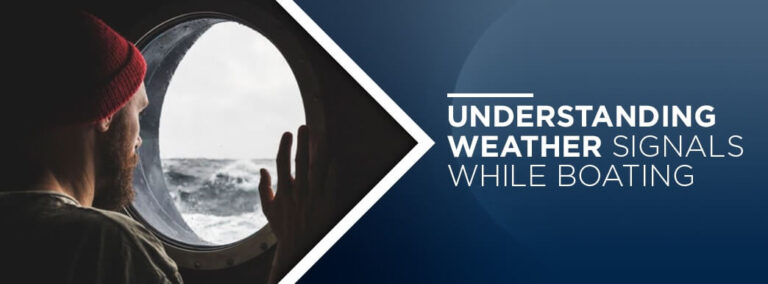How To Drive a Boat
So you’ve finally decided to take on the open waters and learn how to drive a boat. Whether you’re planning on spending your weekends fishing, exploring hidden coves, or just cruising along, mastering this skill will open up a whole new world of opportunities.
In this article, we’ll guide you through the basic steps and techniques to confidently navigate and control a boat. From understanding the controls to maneuvering through different conditions, you’ll be well on your way to becoming a skilled boat driver in no time.
Whether you’re a complete beginner or have some experience, let’s embark on this exciting journey and learn how to drive a boat!
Understanding Boating Basics
Boating can be a thrilling and enjoyable activity, but before you hit the water, it’s important to understand the basics. Familiarizing yourself with different types of boats, knowing the basic parts, understanding the steering mechanism, and learning the basic boat operations are all essential aspects of boating that will ensure a safe and enjoyable experience.
Get Familiar with Different Types of Boats
Boats come in various shapes and sizes, each designed for different purposes. It’s important to familiarize yourself with the different types of boats to understand their capabilities and limitations.
Some common types of boats you may come across include powerboats, sailboats, pontoon boats, fishing boats, and personal watercraft. Each type of boat is unique and requires different skills to operate effectively.
Know the Basic Parts of a Boat
Understanding the basic parts of a boat is vital for safe and efficient operations. The main components of a typical boat include the hull, engine, propeller, steering system, controls, and electrical systems. Knowing how these parts function and interact with each other will help you navigate the water confidently and make any necessary adjustments or repairs.
Understand the Steering Mechanism
Steering a boat is different from driving a car, and it’s important to understand the steering mechanism to avoid accidents or mishaps. Most boats use a steering wheel or a tiller, which controls the direction of the boat.
Familiarize yourself with how the steering mechanism works and practice turning the boat in both calm and challenging conditions to develop your skills.
Learn the Basic Boat Operations
Before hitting the water, it’s crucial to learn the basic operations of a boat. This includes starting and stopping the engine, shifting gears, controlling the speed, and maneuvering the boat in various situations. Take the time to learn and practice these operations under different conditions to build confidence and ensure your safety on the water.
Getting the Necessary Licenses and Permits
Operating a boat legally often requires obtaining the necessary licenses and permits. Understanding why a boat license is required, learning how to apply for one, studying for and passing the licensing exam, and acquiring any other necessary permits are important steps to ensure compliance with boating regulations.
Understand Why a Boat License is Required
Boat licenses are generally required to ensure that operators have a basic understanding of boating rules, regulations, and safety procedures. Obtaining a license demonstrates your competence and commitment to responsible boating. Additionally, boating licenses may be required by law in some jurisdictions.
Learn How to Apply for a Boat License
The process of applying for a boat license may vary depending on your location. Typically, you will need to complete an application form, provide identification documents, and pay a fee. It’s important to research the specific requirements in your area and follow the application process accordingly.
Study for and Pass the Licensing Exam
To obtain a boat license, you may need to pass a licensing exam. The exam usually covers boating rules, navigation, safety procedures, and basic maritime knowledge. Studying the boating regulations and taking practice exams can help you prepare for the licensing exam and increase your chances of passing it successfully.
Acquire Other Necessary Permits
In addition to a boat license, certain activities or areas may require additional permits. For example, if you plan to engage in fishing or other specialized boating activities, you may need to obtain specific permits or certifications. Research the requirements in your area and ensure you have all the necessary permits before engaging in any restricted activities.

Boat Safety Preparations
Safety should be a top priority when boating. To ensure a safe boating experience, it’s important to learn how to use safety gear, understand the importance of life jackets, store a first aid kit and emergency tools, and communicate safety procedures with passengers.
Learn How to Use Safety Gear
Boating safety gear, such as fire extinguishers, distress signals, and navigation lights, should be properly used and maintained. Familiarize yourself with the different types of safety gear and understand how to use them effectively in case of an emergency. Regularly inspect and replace any expired or malfunctioning safety equipment.
Understand the Importance of Life Jackets
Life jackets are essential safety equipment that can save lives in emergencies. It’s crucial to understand the importance of wearing a life jacket and ensuring that everyone on board has a properly fitting life jacket.
Make sure to familiarize yourself with the different types of life jackets and their intended use to choose the most suitable ones for your boating activities.
Store First Aid Kit and Other Emergency Tools
Accidents happen, even on the water. Having a well-stocked first aid kit and emergency tools onboard is essential to provide immediate medical attention and address potential emergencies.
Ensure that your first aid kit is stocked with supplies such as bandages, antiseptic ointments, pain relievers, and any necessary medications. Additionally, keep emergency tools such as a flashlight, flares, and a whistle readily accessible.
Communicate the Safety Procedures with Passengers
Before embarking on a boating adventure, it’s important to communicate and review the safety procedures with all passengers. This includes demonstrating how to properly wear a life jacket, explaining emergency protocols, and informing passengers about potential hazards or risks.
Clear and effective communication will help ensure everyone understands their roles in case of an emergency and promote a safer boating experience for all.
Boat Maintenance Skills
Maintaining your boat properly is crucial for its longevity and overall performance. Understanding the importance of regular maintenance, learning basic maintenance tasks, knowing when to call a professional, and keeping a maintenance schedule are key aspects of boat ownership.
Understand the Importance of Regular Maintenance
Regular maintenance is essential to keep your boat in optimal condition. It helps prevent breakdowns and ensures that all systems are working correctly.
Regular maintenance should include tasks such as checking the engine, changing the oil, inspecting electrical systems, cleaning and polishing the hull, and ensuring all safety equipment is in good working order.
Learn the Basic Maintenance Tasks
Learning basic boat maintenance tasks can save you time and money in the long run. Some essential tasks include checking and cleaning the spark plugs, inspecting the propeller for damage or debris, lubricating steering components, checking and maintaining battery levels, and inspecting and replacing worn-out hoses and belts.
Familiarize yourself with your boat’s owner’s manual and consult with professionals if needed.
Know When to Call a Professional
While some maintenance tasks can be performed by boat owners, there are certain tasks best left to professionals.
If you’re unsure about how to tackle a specific maintenance task or if it involves complex repairs or systems, it’s best to seek the help of a qualified marine mechanic. They have the knowledge, experience, and tools to diagnose and repair any issues effectively and safely.
Keep a Maintenance Schedule
Developing a regular maintenance schedule is crucial for staying on top of important maintenance tasks. Create a checklist of routine maintenance items and establish a schedule to ensure that each task is completed within the recommended timeframe.
Keeping track of maintenance activities will help you maintain the reliability and performance of your boat, as well as uphold its value in the long term.

Basics of Navigation
Proper navigation skills are essential for safely and effectively operating a boat. Learning to use a marine GPS and compass, understanding marine maps and charts, knowing common navigation rules, and learning how to navigate in difficult weather are all crucial for successful navigation.
Learn to Use a Marine GPS and Compass
A marine GPS (Global Positioning System) is a valuable tool for determining your exact position, tracking your route, and planning your journey.
Familiarize yourself with the different features and functions of your GPS device, such as setting waypoints, reading coordinates, and interpreting navigational data. Additionally, learn how to use a compass as a backup navigation tool in case of GPS failure.
Understand Marine Maps and Charts
Marine maps and charts provide vital information about water depths, navigation aids, hazards, and other important details.
Learn how to read and interpret marine maps and charts, including understanding symbols, contour lines, and depth soundings. Knowing how to navigate using these resources will ensure that you can plan your route and avoid potential dangers effectively.
Know the Common Navigation Rules
Boating navigation follows specific rules and regulations to ensure safe passage and prevent collisions. Familiarize yourself with the common navigation rules, such as right-of-way, buoyage systems, and navigational markers.
Understanding and adhering to these rules will help you navigate through various waterways and interact safely with other vessels.
Learn How to Navigate in Difficult Weather
Navigating in challenging weather conditions requires additional skills and caution. Learn how to navigate in fog, heavy rain, strong winds, or rough seas. This includes knowing how to use radar, maintaining situational awareness, adjusting your speed and route, and understanding the limitations and risks associated with adverse weather.
It’s essential to prioritize safety and make informed decisions based on prevailing weather conditions.
Handling Adverse and Emergency Situations
Knowing how to handle adverse and emergency situations is crucial for boating safety. Being prepared to deal with rough weather, knowing what to do in case of a man overboard, learning how to deal with a fire onboard, and understanding the veering and stopping procedure will enable you to respond effectively in emergencies.
Deal with Rough Weather
Rough weather can quickly turn a pleasant boating trip into a challenging and potentially dangerous situation. Understanding how to handle rough weather, such as strong winds, heavy rain, or rough seas, is essential for maintaining control and ensuring the safety of your passengers.
This includes reducing speed, adjusting your course to minimize wave impact, and communicating with your passengers about safety procedures.
Know What to Do in Case of Man Overboard
In the event a person falls overboard, it’s crucial to act quickly and efficiently. Stay calm and remember the acronym “Reach, Throw, Row, and Go.”
This means first attempting to reach the person with an extended object or flotation device, throwing a flotation device to them if you can’t reach, rowing a small boat to them if available, and, as a last resort, calling for help and guiding emergency responders to the person in distress.
Learn How to Deal with Fire Onboard
A fire onboard a boat can be extremely dangerous and potentially life-threatening. It’s important to have fire extinguishers readily available and to know how to use them correctly.
Additionally, understanding how to activate the boat’s fire suppression system, isolating fuel sources, and safely evacuating passengers are vital skills. Practice fire drills and establish clear communication protocols to ensure a swift and effective response in the event of a fire onboard.
Understand the Veering and Stopping Quickly Procedure
In emergency situations, such as encountering an obstacle or another vessel unexpectedly, it may be necessary to veer or stop your boat quickly. Understanding the techniques for emergency maneuvers, such as veering to avoid collisions or stopping quickly to prevent accidents, is crucial to prevent potential harm.
Practice these maneuvers in controlled settings and remain vigilant while operating your boat to avoid emergencies whenever possible.
Practicing Docking and Anchoring
Docking and anchoring are essential skills for any boat operator. Learning the basics of docking, practicing drawing up and dropping the anchor, understanding how to securely tie the boat, and knowing how to leave the dock safely will make your boating experience smoother and more enjoyable.
Learn the Basics of Docking
Docking a boat requires precision and control to avoid damage to your vessel or other boats. Understanding the principles of approaching a dock, using fenders to protect your boat, using appropriate lines for docking, and adjusting your speed and angle are crucial for a successful docking maneuver. Practice docking in different conditions to enhance your skills and build confidence.
Practice Drawing up and Dropping the Anchor
Anchoring allows you to pause and enjoy the surroundings or take a break from boating. Knowing how to draw up and drop the anchor correctly is essential for both safety and convenience.
Learn the proper techniques for determining the right anchoring location, using the appropriate anchor for your boat, and securing the anchor line properly. Practice anchoring in various depths and bottom conditions to become proficient in this fundamental boating skill.
Understand How to Securely Tie the Boat
Properly securing your boat is essential to prevent drifting, damage, or accidents. Understanding different types of knots and how to tie them securely is key when it comes to tying your boat to a dock or securing it to a mooring buoy.
Familiarize yourself with common knots such as the cleat hitch, bowline, and figure-eight knot. Investing time in learning and practicing these knots will ensure your boat remains safely moored.
Know How to Leave the Dock Safely
Leaving the dock is just as important as docking properly. Understanding how to leave the dock safely involves assessing wind and current conditions, communicating with crew members or passengers, and executing a controlled departure.
Practice departing from different dock configurations and in varying weather conditions to develop your skills and ensure a smooth start to your boating adventures.
Understanding Boating Laws and Regulations
To operate a boat legally, it’s crucial to understand and adhere to boating laws and regulations. Knowing the local boating laws, observing speed limits, understanding the rules for interaction with other vessels, and being aware of the rules about alcohol onboard the boat is essential for safe and lawful boating.
Know the Local Boating Laws and Regulations
Boating laws and regulations can vary from one jurisdiction to another, so it’s important to familiarize yourself with the specific laws in your area.
This includes understanding age restrictions for boat operators, the requirement for safety equipment, restrictions on boating in certain areas, and other applicable regulations. Ignorance of the law is not an excuse, so make sure to stay informed and comply with all relevant boating laws.
Understand and Observe Speed Limits
Speed limits are in place to ensure the safety of all boaters and protect the environment. Understanding the speed limits in different areas, such as rivers, lakes, or coastal zones, is essential for safe navigation.
Always adhere to speed limits, especially in crowded or congested areas, near harbors, or in zones designated as no-wake areas. Respecting speed limits will help minimize the risk of accidents and preserve the tranquility of the waterways.
Know the Rules for Interaction with Other Vessels
Knowing the rules for interaction with other vessels is crucial for maintaining order and avoiding collisions on the water. Familiarize yourself with the general navigation rules, such as maintaining a proper lookout, understanding right-of-way rules, signal meanings, overtaking procedures, and navigating in narrow channels.
Vigilance and clear communication with other boaters will ensure a safe and harmonious experience on the water.
Understand the Rules About Alcohol onboard the Boat
Boating and alcohol don’t mix. It’s important to understand the rules and regulations regarding alcohol consumption on board a boat. Operating a boat under the influence of alcohol is illegal and can have severe consequences.
Know the legal blood alcohol concentration limit for boaters in your jurisdiction, and never drink and operate a boat. Ensuring a sober and responsible skipper will help keep everyone on board safe.
Getting Comfortable with Boat Controls
Becoming familiar with boat controls is essential for operating your boat with confidence and precision. Understanding the control panel, mastering the use of the throttle, getting the hang of steering, and understanding the use of trim and tilt controls will ensure smooth maneuvers and an enjoyable boating experience.
Understanding the Control Panel
The control panel is the nerve center of your boat, where all essential controls and indicators are located. Take the time to familiarize yourself with the layout and functions of the control panel.
This includes understanding the engine controls, ignition switch, fuel gauge, navigation lights, and any other components specific to your boat. Regularly check the panel for any warning lights or anomalies before and during your boating trips.
Mastering the Use of Throttle
The throttle controls the speed and power of the boat’s engine. Practice using the throttle to gradually increase or decrease speed, maintain a constant speed, and shift gears smoothly.
Understand the specific throttle control system of your boat, whether it’s a traditional lever, a control knob, or a digital interface. Developing throttle control skills will allow you to navigate various conditions effectively and optimize fuel efficiency.
Getting the Hang of Steering
Steering is a fundamental skill that directly impacts the maneuverability and control of your boat. Practice steering in calm water and gradually progress to more challenging conditions, such as tight turns or evasive maneuvers.
Learn to anticipate and adjust for the boat’s handling characteristics, including factors like propeller rotation and windage. It’s important to feel comfortable and confident with steering to navigate safely and precisely.
Understanding the Use of Trim and Tilt
Trim and tilt controls allow you to adjust the angle of the boat’s engine relative to the water. Understanding when and how to use the trim and tilt controls can optimize your boat’s performance, improve fuel efficiency, and enhance the ride quality.
Experiment with different trim settings to find the most comfortable and efficient setup for your boat in different conditions. As a general rule, trim the engine down for accelerating and planning, and trim it up for higher-speed cruising or rough water conditions.
Properly Storing Your Boat
Proper boat storage is crucial for maintaining its condition and ensuring it remains seaworthy. Understanding the importance of proper boat storage, knowing the various storage options, learning how to prepare your boat for storage, and preventing the growth of mold and mildew are essential aspects of responsible boat ownership.
Understand the Importance of Proper Boat Storage
Improper boat storage can lead to damage from weather exposure, corrosion, or deterioration. Understanding the importance of properly storing your boat during periods of non-use, such as winter or extended periods between boating trips, is crucial for preserving its condition and extending its lifespan. Proper storage also facilitates ongoing maintenance and reduces long-term costs.
Know the Various Storage Options
Boats can be stored using different methods, depending on your specific circumstances and location. Common storage options include dry storage in a garage or storage facility, wet slips at marinas, boat houses, and lift systems. Research and evaluate the available storage options in your area to determine the most suitable and convenient choice for your boat’s needs.
Learn How to Prepare Your Boat for Storage
Before storing your boat, it’s essential to properly prepare it to mitigate potential damage or deterioration. This includes cleaning the boat thoroughly, removing any perishable items, draining the fuel system, treating the engine with a stabilizer, and protecting vulnerable areas from pests, moisture, and UV exposure.
Refer to your boat’s owner’s manual or consult with professionals to ensure you follow the correct preparation procedures.
Preventing the Growth of Mold and Mildew
Mold and mildew can quickly develop in a damp or improperly stored boat, resulting in unpleasant odors and potential damage to the interior. To prevent the growth of mold and mildew, ensure that the boat is thoroughly dry before storage.
This can be achieved by using dehumidifiers, leaving ventilation ports open, or utilizing moisture-absorbing products such as desiccant bags or moisture control systems. Regular inspections during storage can help detect and address any early signs of mold or mildew growth.
To make boating fun and safe:
- Know the basics.
- Get the right licenses and permits.
- Focus on safety.
- Take good care of your boat.
- Learn how to navigate.
- Be ready for tough situations.
- Practice docking and anchoring.
- Follow boating rules.
- Get used to the boat’s controls.
- Store your boat the right way.
Remember, knowledge, skill, and preparation are the keys to a successful and enjoyable time on the water. Happy boating!








